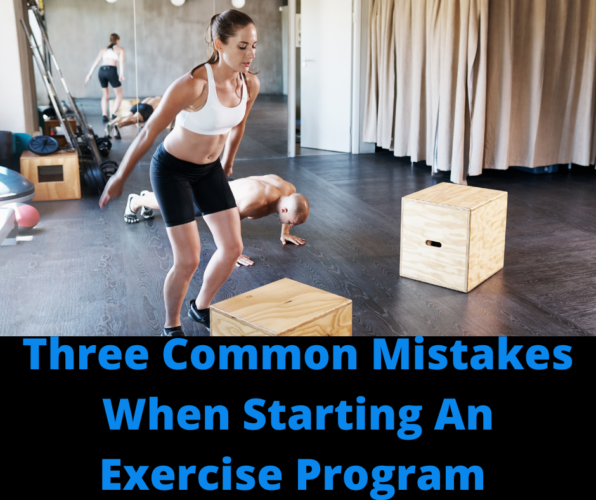What are the top three common exercise mistakes when starting an exercise program?
It’s quite common to fall victim to mistakes when starting an exercise program. Avoiding these pitfalls will help us prevent injuries, get results faster, and increase our chances of sticking with our program.
The first common exercise mistake is adding weight too quickly.
We all want to progress, get stronger and maximize our results. Wanting to progress quickly is understandable but adding too much weight can cause us to take one step forward and two steps back. To avoid this, some rules of thumb are, first, make sure that you can perform exercises through a full range of motion prior to adding extra weight. Also make sure that you can control/lift the weight in a slow and controlled manner. Once we can do that through a full range of motion and in good control, then by all means, go for it, go ahead and add some weight.
In addition to adding weight too quickly we want to avoid overdoing it.
Similar to lifting too much weight, overdoing it can increase chances of injury and ultimately slow progress. A lot of times people jump in and they’re like, hey, if I’m not really sore the next day, then I didn’t do things right. While a little soreness can be a good thing, excessive soreness is not and can lead to overtraining/overuse injuries. Overuse injuries create aches/pains in the joints, constant muscle soreness, and slow down progress. If chronic soreness, aches/pains, and/or progress is happening then it’s a good idea to back off. Depending on the levels of pain/soreness a few days off might be enough but in extreme cases of overtraining taking off 7-10 day is necessary. To prevent overtraining a general rule of thumb is to start with one set per exercise and when the next day soreness subsides you can add an extra set.
Besides overdoing it people often neglect stretching and trigger point.
These techniques are going to keep you flexible, help prevent overuse injuries, and get you faster results. While many are aware of performing stretching, trigger pointing can often be even more helpful. It uses rollers, balls, and hooks that are applied to the muscles to help them release and reset. Bound up tissues/trigger points can cause a host of problems so make sure not to ignore this important component of fitness exercise program.
For more information on any of these subjects check out our Freedom 4 Life Fitness YouTube channel.
Glen Carrigan
Freedom 4 Life Fitness

